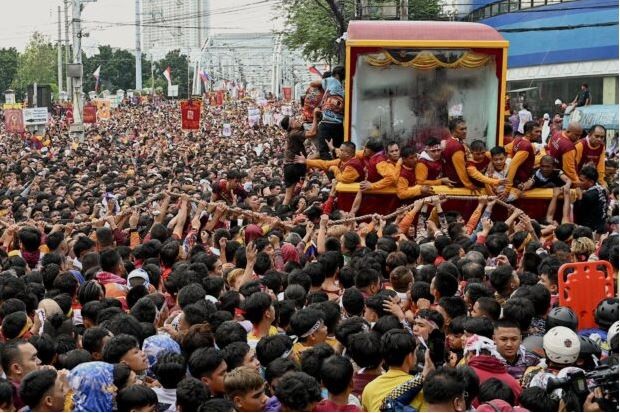The Nazareno procession at the heart of the Philippine capital has concluded after a full day of touring the image of the suffering Jesus in its streets.
The Philippine National Police noted that the procession was considered to be "generally peaceful" and "better coordinated" than in previous years, local broadcaster ABS-CBN reported. The assessment was made despite some terror threats that might happen during the event.
The procession began at Manila's Luneta Park after a morning prayer service at approximately 04:45 local time on Tuesday, January 9 (20:45 UTC Monday, January 8). The carriage was different this year as the image was enclosed in a fiberglass casing on three sides and a steel door at the rear, compared to previous years, when the image was exposed to the elements.

Organized Chaos in Downtown Manila
According to the Philippine Daily Inquirer, more than 1.3 million Catholic devotees swarmed Manila's principal public square for the vigil before the annual January procession, which was stopped for three years due to the COVID-19 pandemic.
The crowd swelled to at least 6.5 million by the procession's end, church authorities added.
Despite the discouragement from church authorities, many devotees still attempted to climb and touch the protruding part of the glass-encased wooden image of Jesus carrying the cross.
After crossing the Pasig River via Ayala Bridge, the procession snaked through the narrow streets of Manila's Quiapo district, where devotees became ecstatic for the return of the tradition - and for some of them, even at the expense of their own personal health and safety.
The procession stopped by several "prayer stations" along the route, but the most prominent stop was at the nearby all-steel Neo-Gothic San Sebastian Church, where the image of the Virgin Mary under the title of "Our Lady of Mount Carmel" was taken out of its shrine to ritually meet the image of the suffering Jesus at the church's side door.
This is how the vicinity of Quiapo Church looked tonight, the day Traslacion finally returned after several pandemic years.
— ABS-CBN News (@ABSCBNNews) January 9, 2024
Millions of Filipino devotees showing their faith to the Black Nazarene. #Nazareno2024 | via @JervisManahan pic.twitter.com/epeh13aEWi
The image entered inside the gate of Quiapo Church at approximately 19:45 (11:45 UTC), 14 hours, 59 minutes, and 10 seconds after it began. This is the fastest procession to date, with the slowest one happening in 2012, when it lasted around 22 hours.
The procession began and ended with the Lord's Prayer.
Police are now preparing for the next major feast in Manila - the Santo Niño celebrations in the nearby district of Tondo.
© 2025 HNGN, All rights reserved. Do not reproduce without permission.








